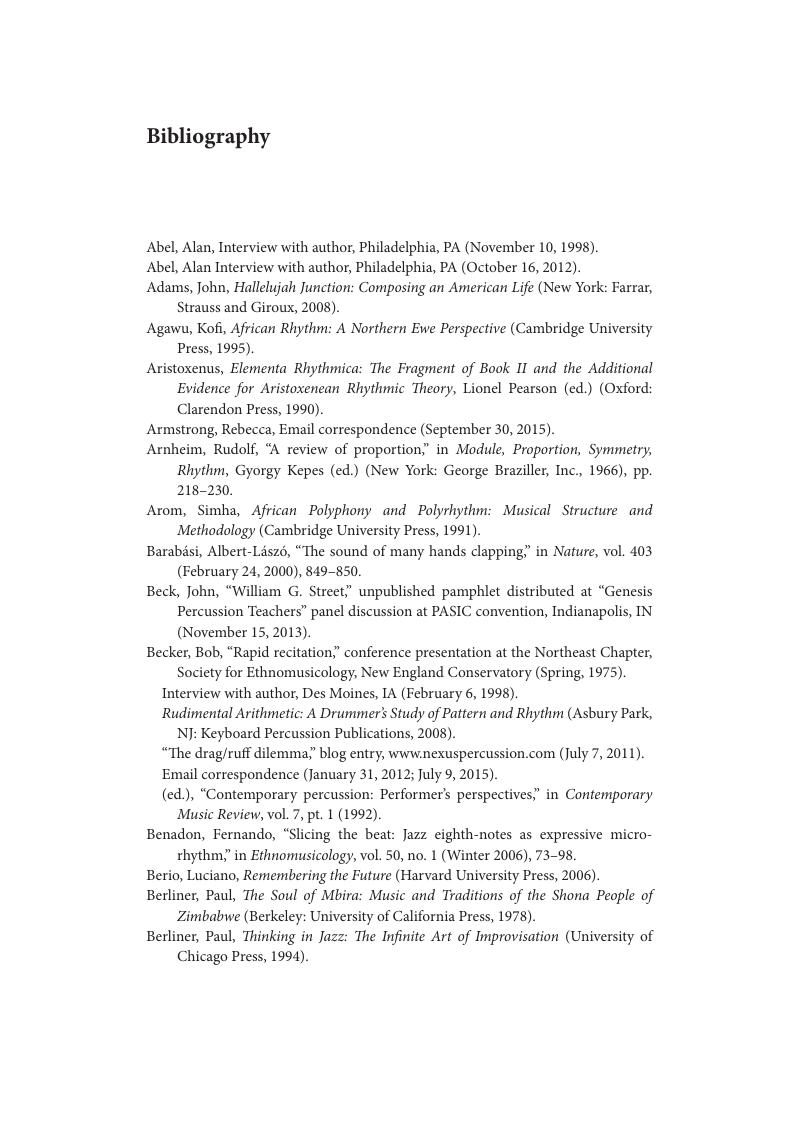Book contents
- Performance Practice in the Music of Steve Reich
- Music Since 1900
- Performance Practice in the Music of Steve Reich
- Copyright page
- Dedication
- Contents
- Figures
- Music examples
- Foreword
- Preface
- Book part
- Introduction
- 1 Drumming, early days
- 2 Percussion and Drumming
- 3 The process of composing Drumming
- 4 Drumming, Part I
- 5 Drumming, Part II
- 6 Drumming, Part III
- 7 Drumming, Part IV
- 8 Acoustics of Drumming
- 9 Anatomy of a phase
- 10 Performance practice in Drumming
- 11 Clapping Music
- 12 Music for Pieces of Wood
- 13 Six Pianos
- 14 Music for Mallet Instruments, Voices, and Organ
- 15 Music for 18 Musicians
- 16 Inside rhythm
- Bibliography
- Index
- References
Bibliography
Published online by Cambridge University Press: 13 October 2016
- Performance Practice in the Music of Steve Reich
- Music Since 1900
- Performance Practice in the Music of Steve Reich
- Copyright page
- Dedication
- Contents
- Figures
- Music examples
- Foreword
- Preface
- Book part
- Introduction
- 1 Drumming, early days
- 2 Percussion and Drumming
- 3 The process of composing Drumming
- 4 Drumming, Part I
- 5 Drumming, Part II
- 6 Drumming, Part III
- 7 Drumming, Part IV
- 8 Acoustics of Drumming
- 9 Anatomy of a phase
- 10 Performance practice in Drumming
- 11 Clapping Music
- 12 Music for Pieces of Wood
- 13 Six Pianos
- 14 Music for Mallet Instruments, Voices, and Organ
- 15 Music for 18 Musicians
- 16 Inside rhythm
- Bibliography
- Index
- References
Summary

- Type
- Chapter
- Information
- Performance Practice in the Music of Steve Reich , pp. 241 - 254Publisher: Cambridge University PressPrint publication year: 2016



